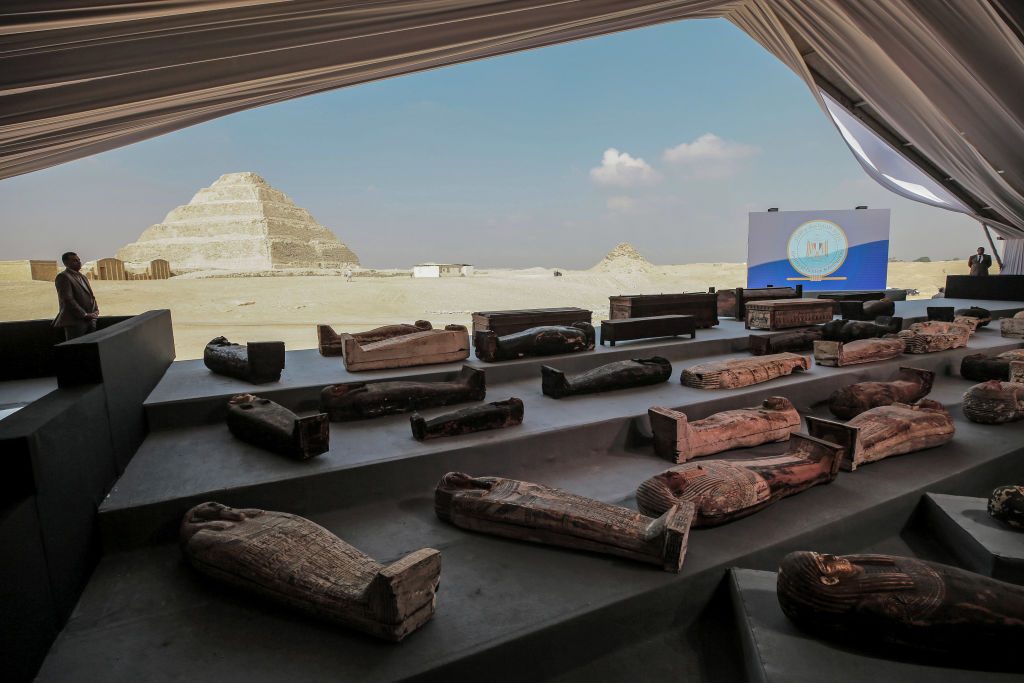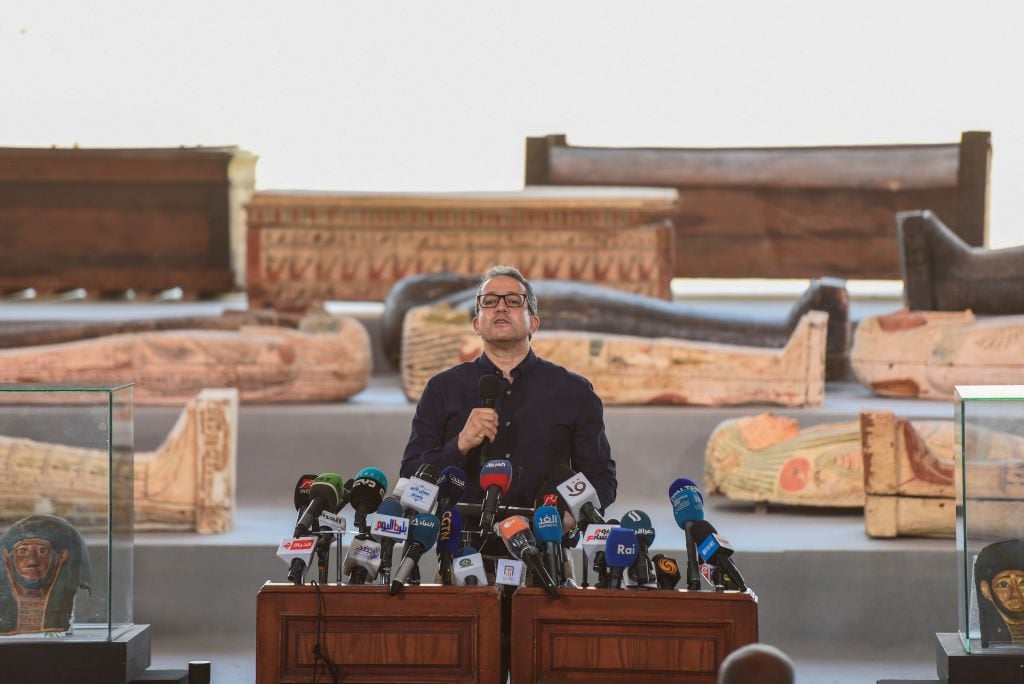Art World
Archaeologists Have Unearthed More Than 100 Painted Sarcophagi—Some With Mummies Intact—in an Ancient Necropolis Near Cairo
It’s the latest in a string of significant discoveries at the historic site this year.

It’s the latest in a string of significant discoveries at the historic site this year.

Artnet News

Ancient Egypt is yielding some not-so-ancient discoveries. Archaeologists recently excavated more than 100 painted sarcophagi—some of which hold mummies—in Saqqara, an ancient burial ground south of Cairo.
The details of the discovery, the largest made at the site this year, were shared during a splashy press conference on Saturday, November 14. The news follows the unearthing of 27 sealed coffins at Saqqara in September, and an additional 32 in October.
“Saqqara has yet to reveal all of its contents,” Khaled el-Enany, the Egyptian minister of tourism and antiquities, said at the press event. “It is a treasure. Excavations are still underway. Whenever we empty a burial shaft of sarcophagi, we find an entrance to another.”

Egyptian Minister of Antiquities and Tourism Khaled El Anany speaks during a press conference at Saqqara to announce the discovery of at least 100 ancient coffins, some with mummies inside. Photo: Mohammed Fouad/dpa via Getty Images.
Found in three 36-foot-deep shafts, the sarcophagi all date back at least 2,000 years, with most of them hailing from between the Late Period (664–332 BCE) to the Ptolemaic period (305–30 BCE). Each featured detailed carvings, paintings, and hieroglyphs. The mummies discovered inside are “in perfect condition of preservation,” el-Enany added.
Other objects uncovered at the site include masks, amulets, canopic jars, and more than 40 gilded funerary statues. Archaeologists at Saqqara expect to make additional finds, including the workshop where bodies were embalmed, in 2021, according to the New York Times.
In an effort to generate interest in national tourism, a sector that has been in decline since the revolution of 2011 and further decimated this year by the public-health crisis and accompanying travel restrictions, Egypt has worked to transform its archeological announcements into media events. In October, when the last batch of coffins was made public, authorities opened one live on stage in front of TV cameras.
This weekend, the ministry of tourism and antiquities took things a step further, x-raying a mummy in front of a crowd of some 200 reporters. They determined that the embalmed figure was an adult male likely in his 40s. His brain, experts reasoned, was removed through his nose during the preservation process. (As an aside, if 2021 doesn’t go much better than 2020, I think we’ll all know which ancient spirit we should not have disturbed.)

Experts conduct an X-Ray examination for a mummy inside a coffin on the site of the wooden coffin discovery in Giza province, Egypt, on Nov. 14, 2020. Photo: Xinhua/Ahmed Gomaa via Getty Images.
Recognized as a UNESCO world heritage site in 1979, Saqqara is home to the Step Pyramid—the oldest such structure in the country, at 4,700-year-old—and was used in the Old Kingdom as a necropolis for the capital of Memphis.
A Smithsonian Channel docuseries based on the Saqqara archeologists, Tomb Hunters, is slated to be released in 2021. A similar documentary, Secrets of the Saqqara Tomb, was released on Netflix this month.